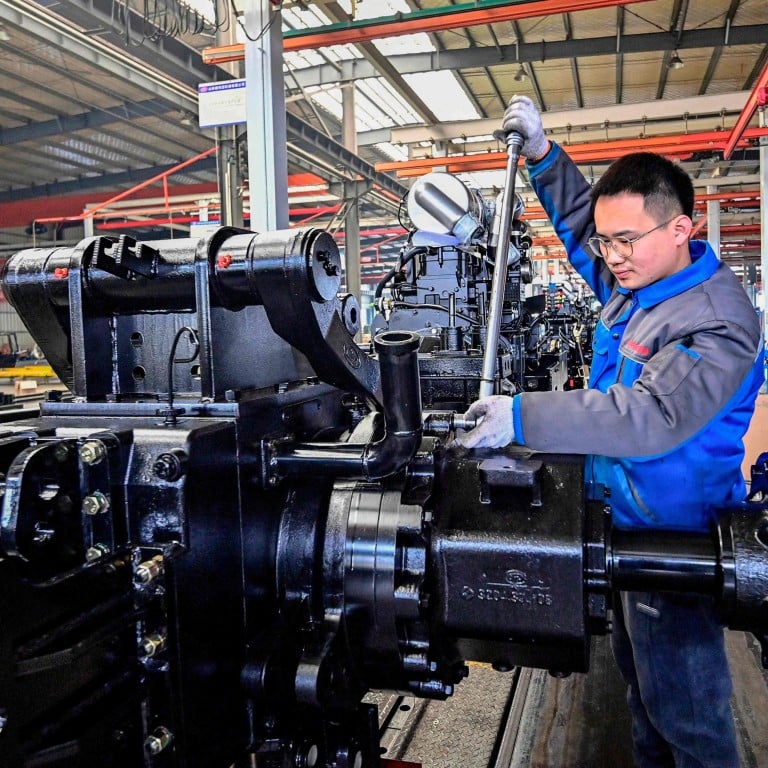
Explainer | China inflation: 4 takeaways from February data as consumer prices turned positive, but factory activity remained subdued
- China’s consumer price index (CPI) rose by 0.7 per cent in February, year on year, ending a run of four consecutive months of decline
- Producer price index (PPI) fell for the 17th month in a row, dropping by 2.7 per cent in February from a year earlier
1. Lunar New Year holiday boosts CPI
Analysts said the turnaround - reflected in official data released on Saturday - was due to temporary factors, such as volatility in food and tourism prices around last month’s Lunar New Year holiday.
“Markets were looking for a boost from food prices due to the Lunar New Year, but overall, food prices remained in negative growth for the seventh consecutive month at minus 0.1 per cent, year on year, despite an uptick in pork and fresh vegetable prices,” said analysts at ING.
China has set its CPI inflation target at 3 per cent for all of 2024 after prices rose merely 0.2 per cent across 2023.
In month-on-month terms, the CPI reading grew in February by 1 per cent, outpacing a 0.3 per cent monthly uptick in January.
China’s consumer prices rebound thanks to holiday boom, but deflation risks loom
Data for January and February showed that the CPI remained unchanged from the same period last year. The figures for January and February are combined to smooth out the impact of the Lunar New Year holiday, which falls at different times during the two months in different years.
“China’s CPI inflation turned positive in February. This was mainly due to the floating Chinese New Year holiday, which was in February this year and in January last year,” said Zhang Zhiwei, president and chief economist at Pinpoint Asset Management.
“If we look at the average CPI inflation of the first two months of this year versus the same period last year, prices were flat, according to the National Bureau of Statistics.”
2. Factory activity remained highly subdued
China’s producer price index (PPI) – which gauges the cost of goods at the factory gate – fell in February by 2.7 per cent, year on year, marking 17 straight months of decline.
“PPI deflation persisted on weak upstream sector prices in the off-season and soft mid-to-downstream prices,” said analysts at Goldman Sachs.
Month on month, the PPI dipped by 0.2 per cent in February compared with January.
In combined data for January and February, PPI dropped by 2.6 per cent compared with the same period last year.
3. Core inflation picks up
China’s core inflation, which excludes volatile food and energy prices, grew by 1.2 per cent, year on year, in February.
“Core inflation picked up from a seven-month low of 0.4 per cent, year on year, to 1.2 per cent, but this was largely due to residual seasonality caused by the later timing of the Lunar New Year in 2024 compared with 2023,” said analysts at Capital Economics.
4. ‘Too early to conclude that deflation is over’
Analysts at ING said that the inflation readings in February were “relatively encouraging” and that they should “temporarily quiet the deflation worries”, despite admitting that inflation would likely remain weak for the majority of the first six months of the year.
“I think it is too early to conclude that deflation in China is over. Domestic demand is still quite weak,” said Zhang at Pinpoint Asset Management.
“Property sales of new apartments have not stabilised yet. The fiscal policy stance has turned more proactive at the National People’s Congress, but the bond issuance has not picked up yet. It takes time for the fiscal boost to be transmitted to the economy and help domestic demand recover.”
It is too soon to say we have fully shaken off disinflationary pressures
Analysts at Capital Economics “expect CPI inflation to average only 0.5 per cent in 2024, still far below pre-pandemic norms”. That would be much lower than Beijing’s annual target of 3 per cent.
“We think China’s low inflation is a symptom of its growth model built on a high rate of investment,” Capital Economics said. “As reducing dependence on investment is still far off, we expect inflation to remain subdued relative to pre-pandemic norms in the long run.”
Goldman Sachs analysts said the headline CPI reading in March is likely to fall from February as the Lunar New Year effect fades out, while PPI deflation was seen persisting in the coming months.
And a takeaway from HSBC analysts was that “it is too soon to say we have fully shaken off disinflationary pressures, and more policy support is still needed to solidify growth to reach the ‘around 5 per cent’ [economic growth] target this year”.

.JPG?itok=J8tgfPmW&v=1659948715)